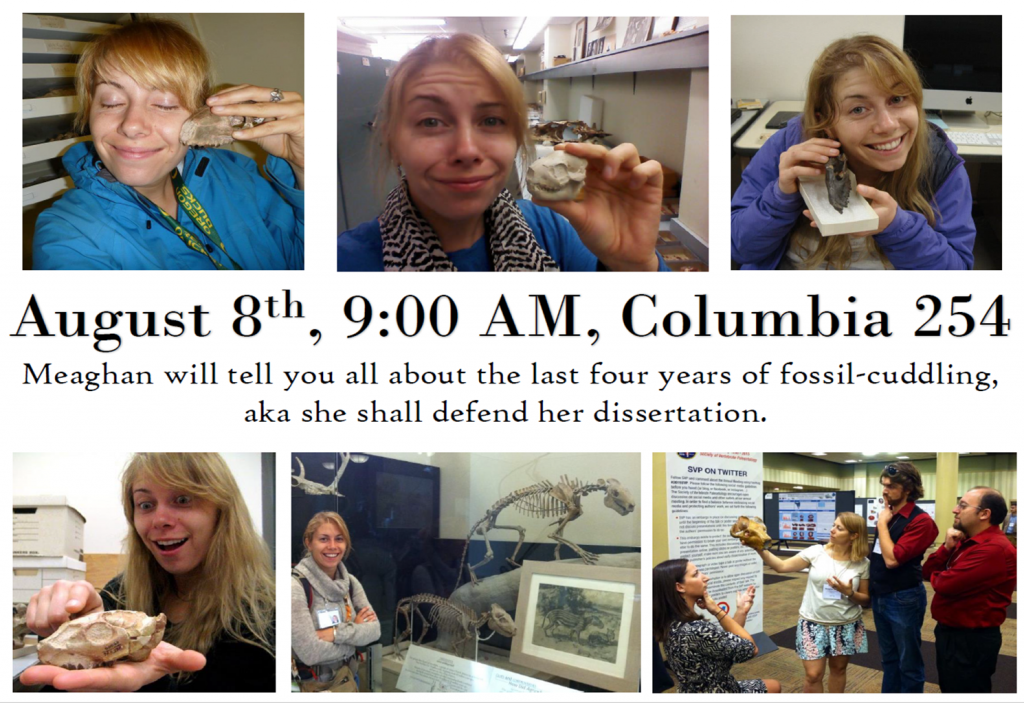Congratulation to Meaghan Emery-Wetherell who successfully defended her dissertation this morning! She worked on understanding variation in even-toed ungulates (Artiodactyla) and specifically looked at the extinct group known as oreodonts. Good job on your accomplishment! She will be moving to Central Washington University as an adjunct lecturer this fall.
teeth
Two More Senior Theses Presented!
Congratulations to our two remaining seniors who presented their senior theses this week! Eva Biedron successfully defended her senior thesis on fossil squirrels from a middle Miocene site in central Oregon through the Clark Honors College on Monday. Selina Robson presented her senior thesis to the Department of Geological Sciences on a new species of Miocene hyena from Kyrgyzstan today. Congratulations to both of them for finishing their degrees! Eva will be headed off to Vanderbilt University to work on her masters while Selina will be heading to the University of Calgary to work on hers!
New paper on enamel complexity and body size in horses!
Congratulations to Nick Famoso and Edward Davis who’s paper, “On the relationship between enamel band complexity and occlusal surface area in Equids (Mammalia, Perissodactyla),” came out today in the journal PeerJ. They used fractals to quantify enamel band complexity on the chewing surface of horse teeth and investigated the relationship between complexity and body size while accounting for phylogeny. They found that as horses get bigger, their teeth become less complex! You may view the paper here.

Figure 4: Phylogeny used in this study with continuous characters, tooth area and fractal dimensionality (D), mapped onto the tree. This tree is a time-scaled (Ma) informal supertree. Characters were mapped using the contMap function in the phytools package version 0.4–45 (Revell, 2012) implemented in R. Length refers to the length of the legend in units of branch length. † = extinct taxon.


You must be logged in to post a comment.